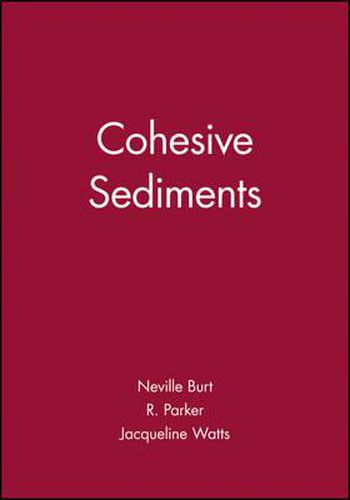Readings Newsletter
Become a Readings Member to make your shopping experience even easier.
Sign in or sign up for free!
You’re not far away from qualifying for FREE standard shipping within Australia
You’ve qualified for FREE standard shipping within Australia
The cart is loading…






There is an alarming tendency today to assume that something calculated by a computer must be correct, yet the phrase ‘garbage in, garbage out’ (gigo) is possibly nowhere more (generally) appropriate than in computer modelling of cohesive sediment behaviour. The behaviour of ‘mud’ is highly complex and one only needs to look at a sample under a microscope to see why - the variety of particle shapes, not to mention the presence of living organisms, make it a substance with properties virtually unique to its situation which even change with time. For many years most researchers tended to avoid it, preferring to study sand and gravel, but a dedicated few tackled it and found a forum for discussing their work in the first Cohesive Sediments Workshop in Florida in 1980. The workshop met about every three years resulting in publication of some of the most definitive papers on the subject. By 1994 it was time to recognise the extensive research being carried on in Europe by holding the workshop in that region. Intercoh ‘94 (the 4th Nearshore and Estuarine Cohesive Sediment Transport Conference) drew together about 100 of the world’s leading researchers in the field. The resulting papers, presented in this volume, truly represent the definitive state of the art on the measurement and modelling of mud properties today.
$9.00 standard shipping within Australia
FREE standard shipping within Australia for orders over $100.00
Express & International shipping calculated at checkout
There is an alarming tendency today to assume that something calculated by a computer must be correct, yet the phrase ‘garbage in, garbage out’ (gigo) is possibly nowhere more (generally) appropriate than in computer modelling of cohesive sediment behaviour. The behaviour of ‘mud’ is highly complex and one only needs to look at a sample under a microscope to see why - the variety of particle shapes, not to mention the presence of living organisms, make it a substance with properties virtually unique to its situation which even change with time. For many years most researchers tended to avoid it, preferring to study sand and gravel, but a dedicated few tackled it and found a forum for discussing their work in the first Cohesive Sediments Workshop in Florida in 1980. The workshop met about every three years resulting in publication of some of the most definitive papers on the subject. By 1994 it was time to recognise the extensive research being carried on in Europe by holding the workshop in that region. Intercoh ‘94 (the 4th Nearshore and Estuarine Cohesive Sediment Transport Conference) drew together about 100 of the world’s leading researchers in the field. The resulting papers, presented in this volume, truly represent the definitive state of the art on the measurement and modelling of mud properties today.